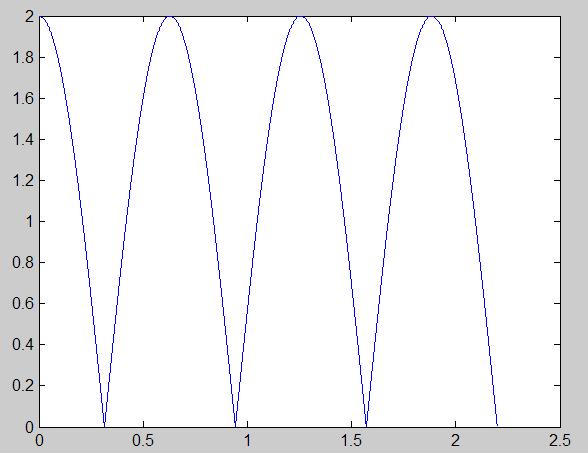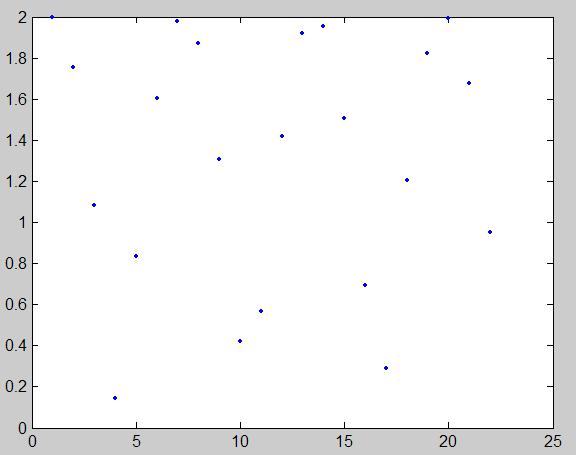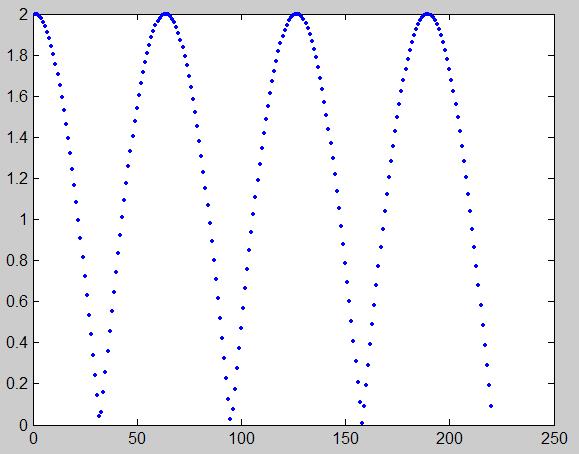(→Periodic Signals and Non-Periodic Signals) |
(→Periodic Signals and Non-Periodic Signals) |
||
| (2 intermediate revisions by the same user not shown) | |||
| Line 8: | Line 8: | ||
As can be seen below, when the function mentioned earlier is sampled at the inappropriate frequency, the signal becomes non periodic. This function can be represented by <math>x[n] = |2*cos(.5*n)|</math> and is graphed below at a sampling rate of <math>1/7\pi</math>. | As can be seen below, when the function mentioned earlier is sampled at the inappropriate frequency, the signal becomes non periodic. This function can be represented by <math>x[n] = |2*cos(.5*n)|</math> and is graphed below at a sampling rate of <math>1/7\pi</math>. | ||
| − | [[Image: | + | [[Image:hw2b3_moellerb_ECE301Fall2008mboutin.jpg|300px|frame|center|The discrete-time signal <math>x[n] = |2*cos(.5*n)|</math> is not periodic.]] |
| + | |||
| + | In addition to this observation, however, it is important to note that if several different time-shifted portions of this equation were laid on top of each other infinitely many times, it would become a periodic signal again. This is illustrated below. | ||
| + | |||
| + | [[Image:hw2b4_moellerb_ECE301Fall2008mboutin.jpg|300px|frame|center|The discrete-time signal <math>x[n] = |2*cos(.5*n)|</math> becomes periodic when superimposed with several time-shifted iterations of itself.]] | ||
Latest revision as of 17:25, 11 September 2008
Periodic Signals and Non-Periodic Signals
Most of the signals from Homework 1 were boring (including mine) so I thought I'd broaden the periodic signal pool. I chose the CT signal: $ x(t) = |2*cos(.5*t)| $ . A graph of this signal in continuous time is shown below.
As can be seen below, when the function mentioned earlier is sampled at the inappropriate frequency, the signal becomes non periodic. This function can be represented by $ x[n] = |2*cos(.5*n)| $ and is graphed below at a sampling rate of $ 1/7\pi $.
In addition to this observation, however, it is important to note that if several different time-shifted portions of this equation were laid on top of each other infinitely many times, it would become a periodic signal again. This is illustrated below.




